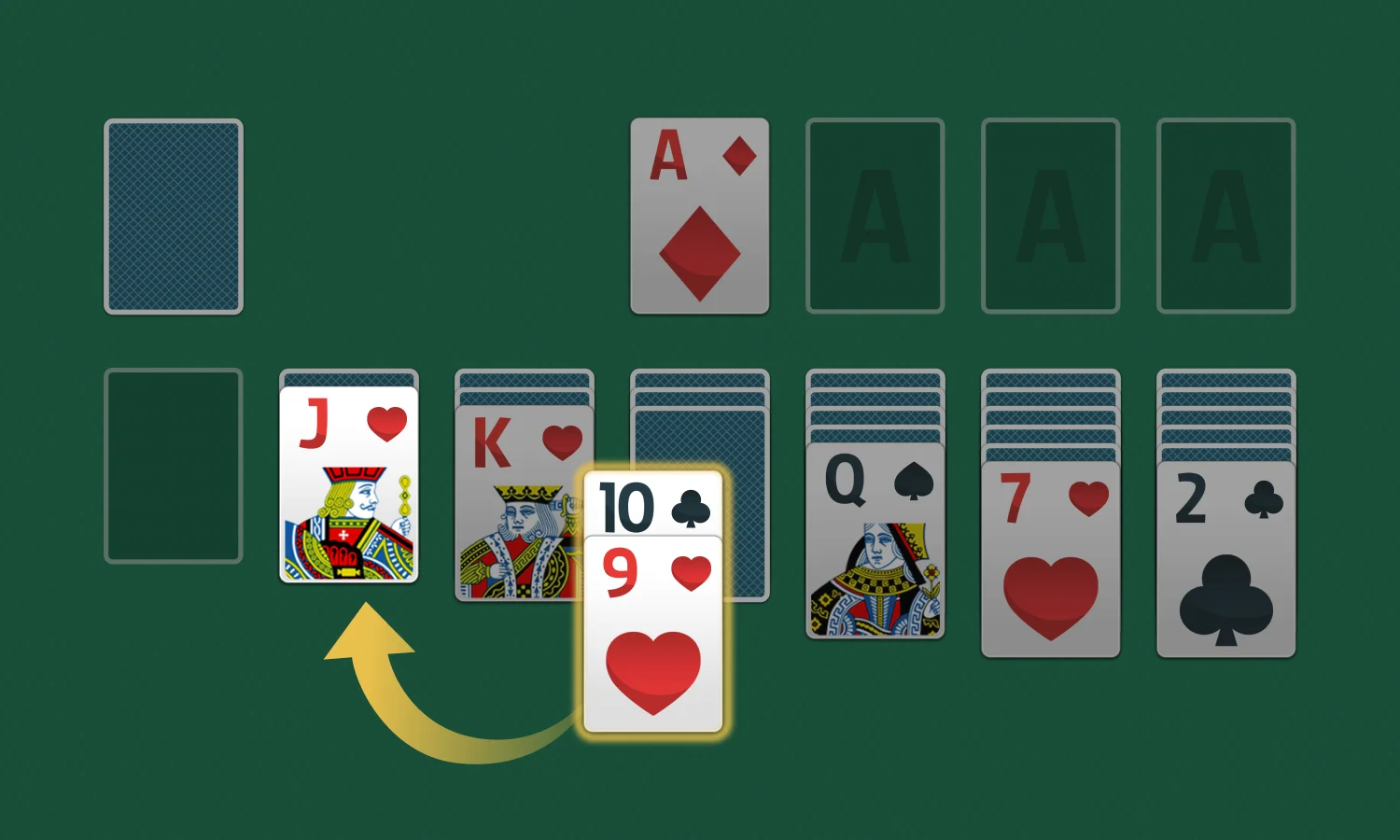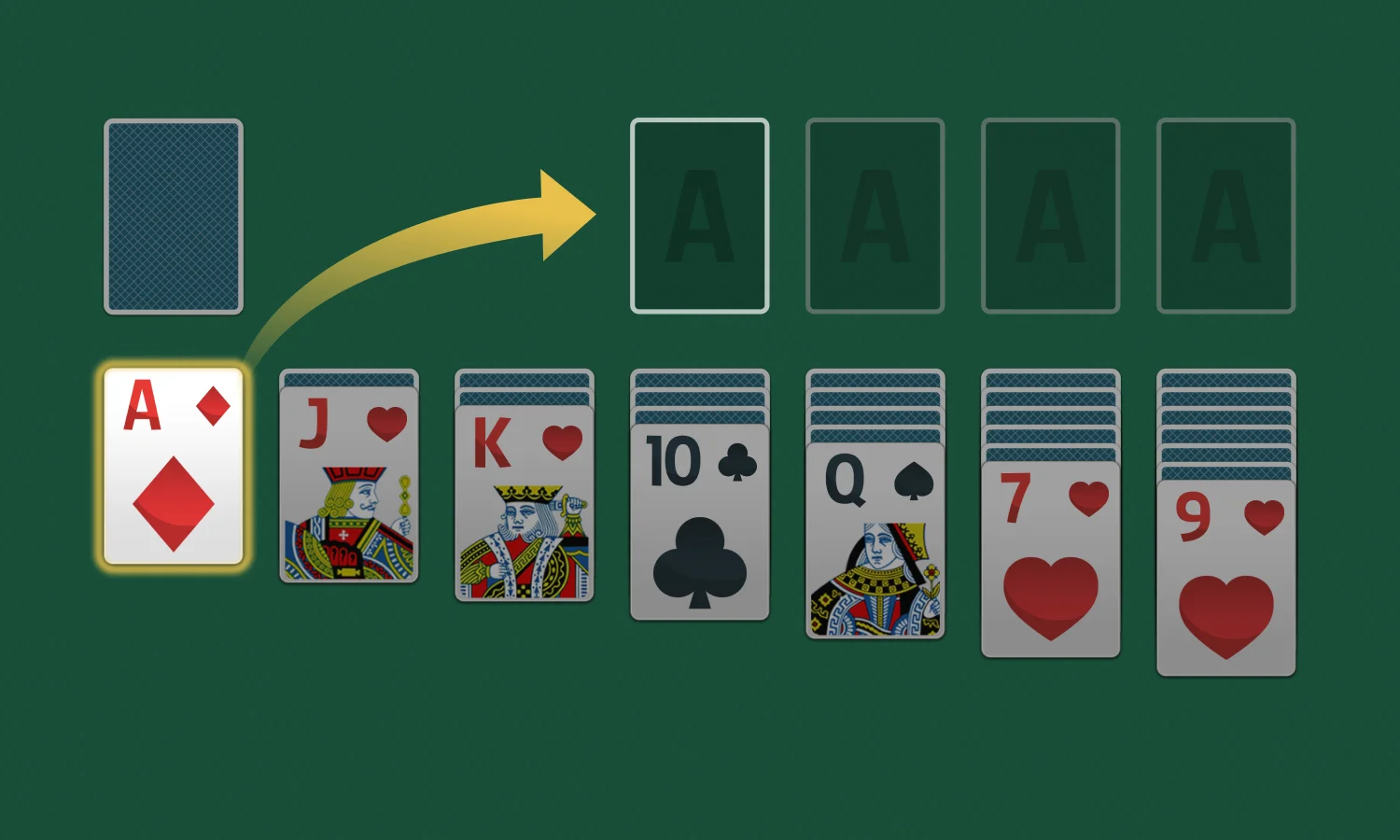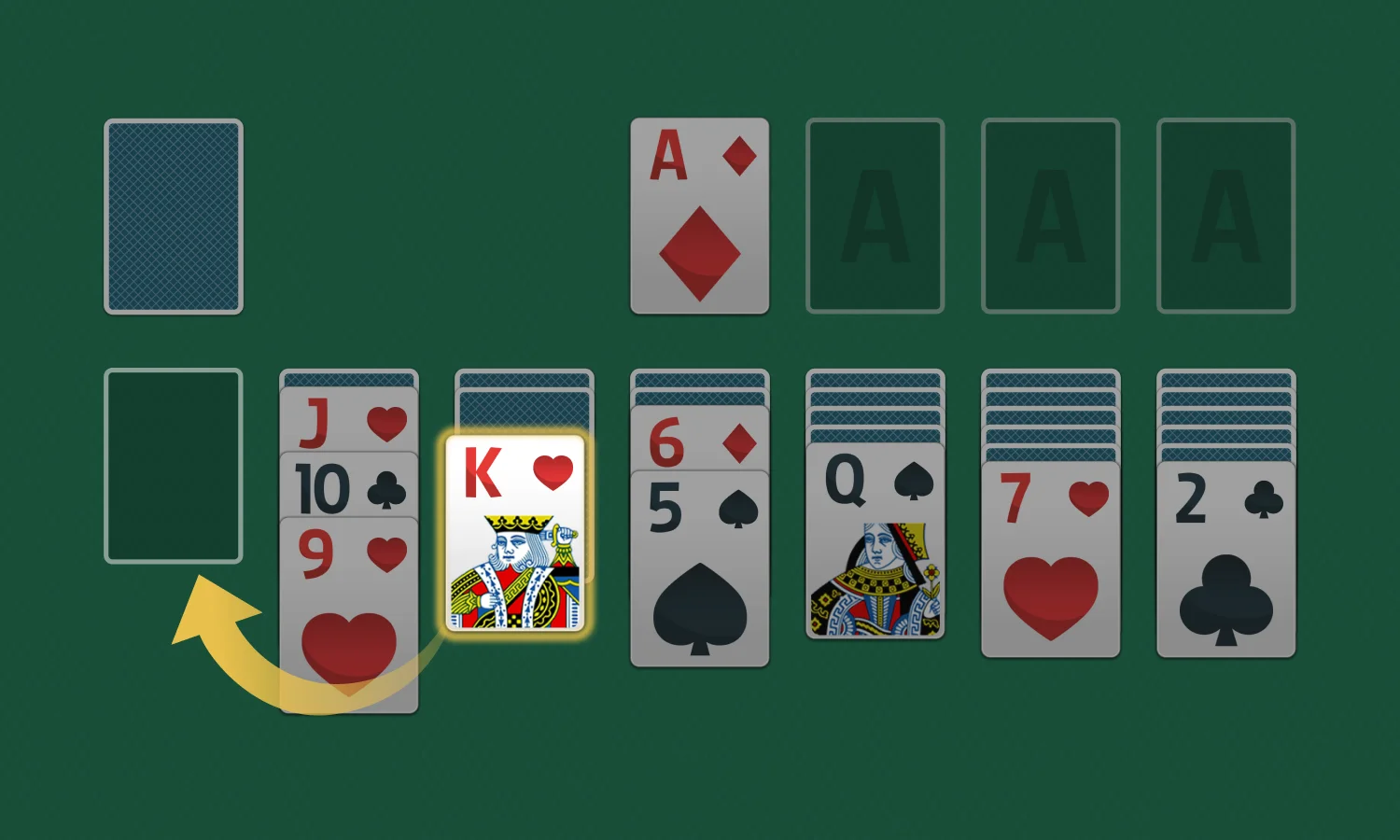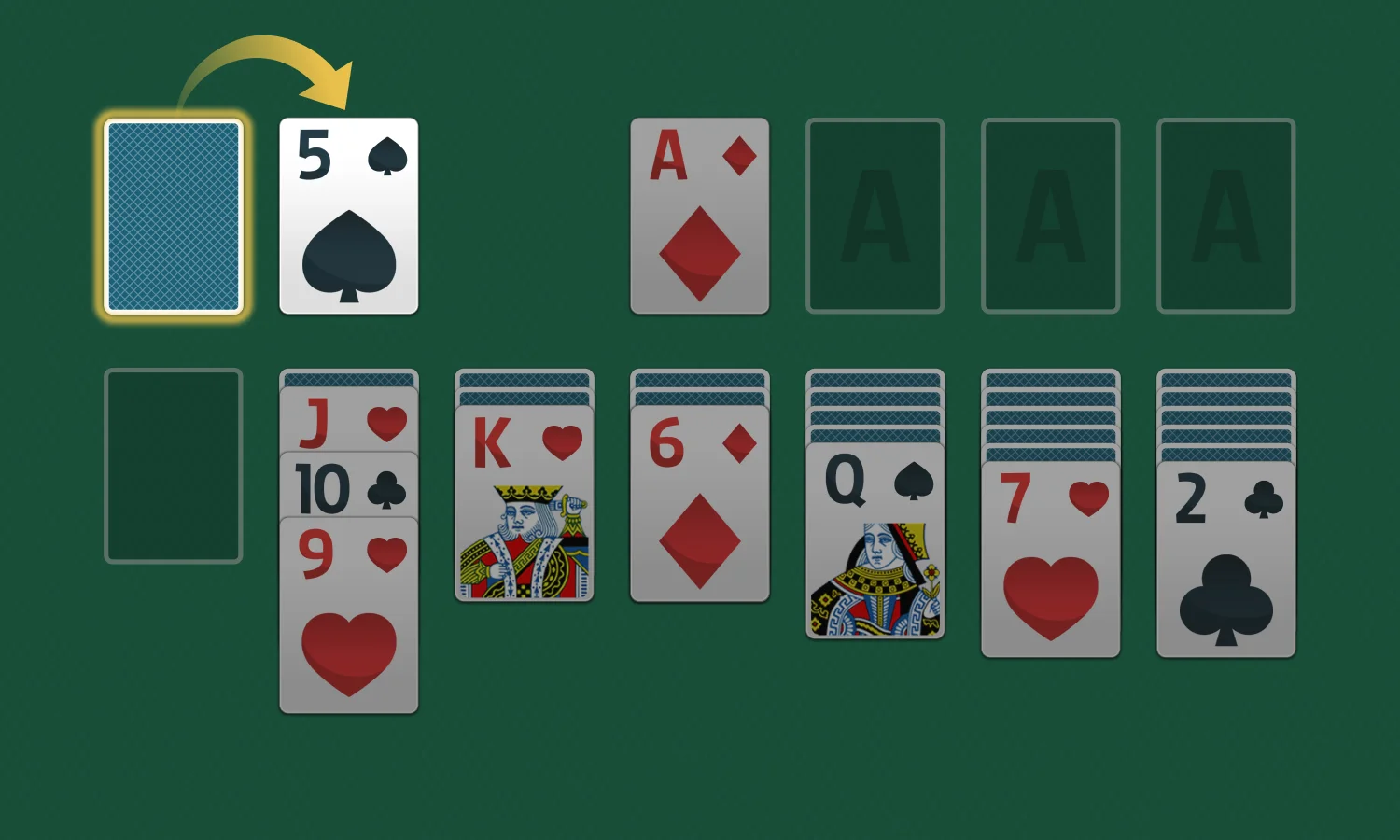Solitaire — one of the most widely played of all card games. First mentioned in the 18th century and still popular today, timeless and endlessly varied, it attracts players all over the world — across nations and genders.
"Solitaire is a game of chance," some say. But make no mistake — that’s far from the truth.
Of course, there's always a bit of luck involved, but there are also winning strategies that can greatly improve your chances. As long as you’ve learned Solitaire rules carefully, pay attention to this complete guide on how to win Solitaire.
When building sequences, look at the cards you have and think about how you can use them. Pay attention to the colors, and try to keep options open for building both red and black sequences.

Try to build your sequences evenly. It can be tempting to combine two piles when you have the chance, but unless it helps you uncover a hidden card, it’s usually better to keep them separate. The more sequences you have, the more moves you'll be able to make. Also, don’t block your options by leaving Aces and Twos on the tableau — they won’t help free other cards, so move them to the foundations as soon as you can.

Remember, once a King is placed in the tableau, it cannot be moved until a foundation is ready for it. Equally, try not to empty a tableau spot if you don’t have an available King — this will limit your possible moves. Additionally, if you have a pile with a red King, try to use a black King on an empty spot. This gives you the most options for sequences.

The stockpile, of course, is vital to your overall game, but use it only when absolutely necessary. Your priority is to uncover the face-down cards in the tableau piles — they should be your main focus, with the stockpile serving as a secondary aid. Remember: you don’t need too many cards cluttering the tableau!

And if, despite all your efforts, you still find yourself stuck — but don’t want to leave the game without a win — our website offers a unique tool: the Magic Wand. It helps you pull the exact card you need, no matter where it’s hidden, and clears the way to victory even in the most tangled layout.
Klondike Solitaire Turn 1 is the easiest version of Solitaire, and if you need something more challenging, try the harder version of the game. Here are some tips to help you get out of tricky situations in most difficult versions of Solitaire you can find on Solitaires.com.
Optimizing the use of empty columns is important! If you do end up with an empty spot and no King to go into it, all is not lost. Build sequences around the empty spot so that a King becomes available.
Many players think that once a card is in the foundation, it's done and gone — but that's not always true. If it helps you free up a useful King for an empty tableau space, you can take cards back out of the foundation and use them in the tableau again.
One wrong move can block your cards and mess up the whole game. It’s not always easy to fix, but it’s possible — by rebuilding the sequence. Though it’s totally normal to hesitate before breaking the neat work apart, sometimes, that’s exactly what you need.
The best way to improve is to play a lot, notice where you usually get stuck, and try other Solitaire variations too — they’re great for training your brain to think differently.
Finally, remember that the Magic Wand is just a click away whenever you get stuck. This unique tool, available only on our website, helps reveal the hidden card you need and can turn the tide of the game. Even when a win seems out of reach, the Magic Wand gives you a second chance!
The difference between winning and getting stuck in Solitaire can be a single move. Avoiding these common mistakes is vital:
With these Solitaire tips up your sleeve, you’re not just playing anymore — you’re taking charge! Flipping hidden cards, keeping the tableau and stockpile in check, thinking a few steps ahead — these are key aspects of how to win Solitaire.